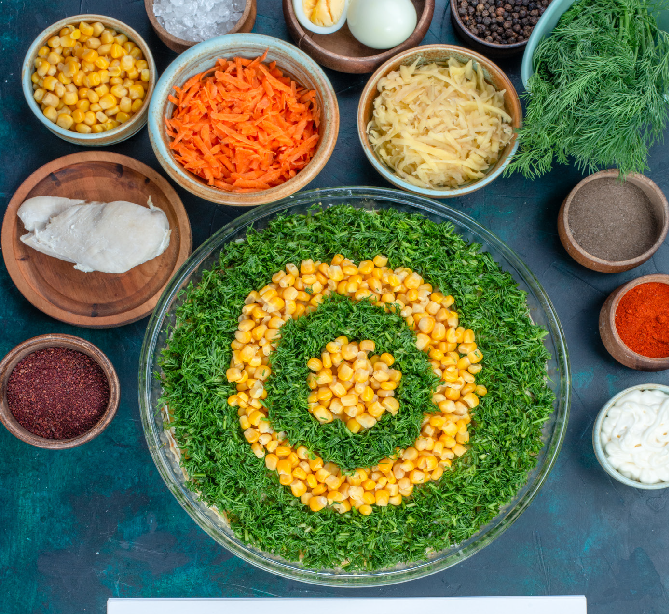
Fish, rice and Bangalis
Bengali cuisine is all about rohu, rice, and rasgullas.
NT Features
Rich and varied in its platter, from snacks to main course and dessert, the Bengali cuisine has its origins from what is now West Bengal and Bangladesh. Although the food habits, tastes, preferences, and choices of items vary with the numerous districts, communities and religions, the basic course generally has a dominant role of rice and fish. This is why a Bengali is often typified as a ‘maache-bhaate-Bangali’ where Maach means fish and Bhaat means boiled rice. A Bengali meal follows a multi-course tradition where food is served coursewise usually in a specific format, marking it as the only meal of the subcontinent to have evo l ved such convention. It is quite similar to the present-day service à la russe style of French cuisine. Generally, a Bengali meal starts with a ‘Shukto’ (a bitter preparation) followed by ‘Shak’ (leafy vegetables), dal (pulses), variety of vegetables, fish/mutton/chicken/egg curry, chutney (sweet-sour saucy item) and ends with a sweet dish like curd and other traditional sweets like sandesh or rasgulla. With time Bengalis have embraced different culinary influences as well including that of the Mughals, Chinese and British subtly twisting these to suit their own tastebuds.
RECIPES
Doi maach:
The Bengali doi maach is a thick and spicy fish curry made out of marinated pieces of fish cooked in a yogurtbased based gravy. It is robust, slightly spicy, and delicately sour with a balance of curd and spices. The fish is really tender and soft having absorbed the flavours of the gravy. It is often served with steamed rice as a complete meal.
Ingredients
- 1 Kg Rohu or rawas or any freshwater fish (cut into steaks or pieces, washed)
- For marination
- 1/2 tbsp Turmeric powder
- 3/4 tbsp red chilli powder Salt
- 2 tbsp Mustard oil
For the curry
- 2 tbsp Mustard oil
- 1 Bay leaf
- 1/2 inch Cassia
- 4 cloves
- 4-5 green cardamoms
- 1/2 tbsp cumin seeds
- 1/2 tbsp turmeric powder
- 1 tbsp Hot red chilly powder, medium
- 2 tbsp ginger garlic paste
- 1 onion (ground to a paste)
- 1/2 kg curd (whisked) Salt to taste
- To garnish coriander leaves
Method:
For marination, Put the pieces of fish into a bowl and add the turmeric, chilly powder, salt and a teaspoon of mustard oil to help the spices adhere to the fish.
Gently massage the spices into the fish.Cover and keep aside to marinate for 15 minutes.Whisk the curd well in another bowl and add the turmeric and red chilly powder. Keep aside.
Fry the fish
Heat a medium sized frying pan till hot and add the 2 tablespoons of mustard oil. Heat well till the oil is smoking to burn off most of its pungency.
Once hot, add the marinated fish pieces and fry them for a couple of minutes on each side till they are a golden brown around the edges and richly colored.
When the fish is golden and 3/4 cooked through, remove them to a plate and keep them aside.
Heat the same pan with the lovely fishy mustard oil once again and when the oil is hot, add the bay leaf, cumin seeds, and whole spices, saute on a medium flame until they are wonderfully fragrant and change colour.
Now add the onion paste and saute it till it’s a light golden brown in colour, add the ginger and garlic paste and cook the aromatic spice base with a little water until it’s a rich but light golden in colour and the oil has surfaced to the top.
Turn down the heat to medium-low and add the whisked curd and spice mixture to the pan, stir gently and simmer the curd gravy for 10 to 15 minutes or until the oil surfaces and the gravy is a lovely rich mustard-golden-yellow in colour.
Add some salt and stir through to combine well. Now, simply add the pieces of fried fish, along with all their resting juices on the plate to the gravy and simmer it for another 10 minutes to gently poach the fish to perfection.Once the oil has risen to the top and the fish is cooked perfectly, turn off the heat and check for a balance of flavour. Squeeze over some lime juice to lift the flavours with a real citrus kick for a lovely contrast of flavours along with a generous garnishing of fresh coriander leaves.
Serve the doi maach with hot steamed rice.
 English daily published in Bengaluru & Doha
English daily published in Bengaluru & Doha






